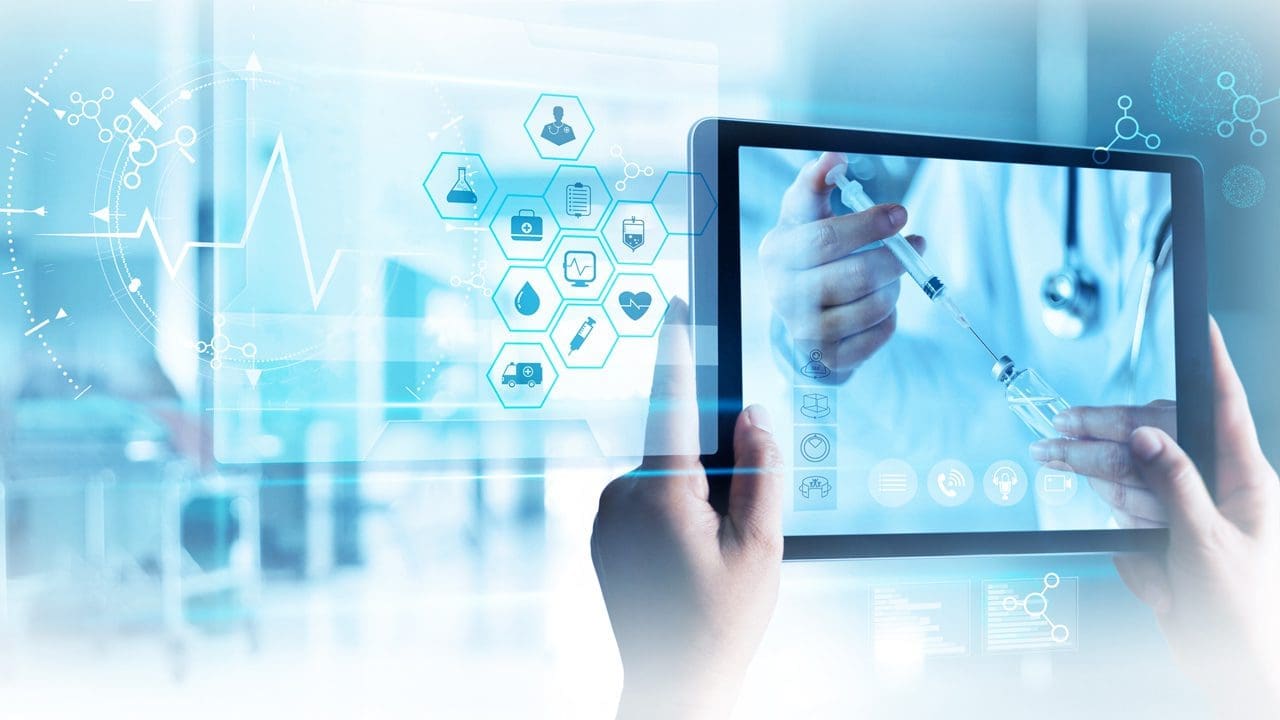As the COVID-19 global pandemic waged on in 2021, we saw a global population continue to use mobile and remote technologies for everyday tasks: video conferencing platforms were used by workers and students, streaming content applications kept us entertained at home, and grocery shopping was done through a mobile app. If prior to the pandemic, the use of mobile apps and remote technology platforms was an option, for many it has now become a necessity.
In the U.S., according to the Centers for Disease Control, about 43% of surveyed health centers were capable of providing telehealth services in April 2019. One year later, that number stood at 95%. Although the open embrace by patients and clinical professionals in the use of telehealth has fostered positive innovation and advancements in technology, it further exposed the level of healthcare inequity across the globe. The lack of access to healthcare equally translates to lack of access to telehealth services. The IEEE Standards Association (IEEE SA) has sought to address this long standing digital divide challenge: the lack of accessibility, which has shown to be especially detrimental with regards to the healthcare sector.
Telehealth—the use of electronic information and telecommunications technologies to support remote clinical health care—has increased the capability of the healthcare system to provide non-urgent or non-critical care without requiring to see the physician in a face-to-face environment. The circumstances of the pandemic urged us to embrace a new way of living that was largely dependent upon access to the internet, however for others without access, the pandemic exacerbated challenges that much more. IEEE SA offers multi-disciplinary, global volunteers an open collaboration platform to enable consensus-building and solutions development that can be vital to helping address the technical challenges of inaccessibility while working to establish trust, security and validation for individuals involved in the telehealth experience.
As we look ahead to 2022, it is through a lens of accessibility and trust that we seek to address these three expected trends in healthcare.
Expanded Remote Patient Monitoring (RPM)
Out of interest or out of necessity, healthcare providers and patients are engaging with connected health platforms or tools for real-time monitoring, better diagnosis and therapeutic delivery in rapidly growing numbers. In 2020, it was estimated 23.4 million US patients used an RPM device, 9% of the population, outside of a healthcare facility for clinical use, with expected growth to 30 million representing 11.2% by 2030 (InsiderIntelligence.com).
Clinical use of RPM devices are highly utilized by patients with chronic diseases (i.e. diabetes, high blood pressure, etc) and more increasingly with the aging population and patients with mental health concerns. A KLAS Research report surveying 25 healthcare organizations found 38% of healthcare organizations running RPM programs focused on chronic care management reported reduced admissions, while 17% cited cost reductions. (InsiderIntelligence.com)
- In 2020, the diabetes segment accounted for the largest share of the [RPM] market due to presence of a large patient pool and higher adoption of blood glucose monitors. (AlltheResearch.com)
- According to CDC’s National Diabetes Statistics Report, 2020, 34.2 million Americans (1 in 10) have diabetes and 88 million adults (1 in 3) are prediabetic.
- The strongest secular trend driving growth in the patient monitoring equipment market is an aging demographic in the United States. The Census Bureau estimates that by 2030, people aged 65 and older in the United States will outnumber those aged 18 and under. (MedDeviceOnline.com)
While the pandemic may have accelerated this growth, society was already approaching a critical need for additional patient care options, largely due to the reason that people are living longer. According to a study published in the International Journal of Epidemiology, COVID-19 has tragically lowered life expectancy on a global scale. However, more macro trends from the World Health Organization show life expectancy has, in general, increased, leading to a larger geriatric population with varying levels of healthcare needs.
The number of caregivers—family members, assisted living professionals, and others— for this population has not kept pace with this population’s growth, leading to increasing demand for technological solutions to support healthcare providers. Reacting to demand from the market, technologists are developing platforms and tools that meet the need for remote patient monitoring, point-of-care diagnosis, and virtual care. Devices like automated medication dispensers, extended reality headsets for pain management, or knee braces with motion sensors show promise for connected health and the ability to support recovery or provide physical therapy and other clinical support without leaving home.
However, these technologies come with challenges or limitations. For example, many solutions designed for use with geriatric populations might not take feasibility into account. Many members of this population may have limited experience using technology and low interest in learning how to use a device. Others may not have sufficient motor skills or have hearing or sight limitations that prevent them from using the technology independently, therefore not easing the challenge of caregiver shortages.
To address these challenges in remote patient care, IEEE SA provides a platform for the world’s technologists to collaborate and develop standards and solutions in areas including robotics and automation with the purpose of supporting human-centric design. One of our Industry Connections activities, Transforming the Telehealth Paradigm: Sustainable Connectivity, Accessibility, Privacy, and Security for All, seeks to establish a foundation of security, connectivity, accessibility, and privacy for future innovations in telehealth delivery. Additionally, our Global Wearables and Medical IoT Interoperability & Intelligence (WAMIII) Program aims to develop trusted solutions to enable secure, connected, private and seamless PPAN (personal patient area network) experience in the use of connected medical technologies on, in, or around the human body.
Increased Artificial Intelligence (AI) in Connected Medical Technologies Cybersecurity
It’s estimated that 50 billion medical devices will be connected to clinical systems within the next 10 years (MedCityNews.com). The growing number of medical connected devices combined with the possibility of monetizing patient data has resulted in the number and sophistication of cyberattacks targeting healthcare organizations. The first half of 2021 saw 1.5 billion attacks on smart devices, a 100% growth versus 2020 during the same period of time (Threatpost.com). According to a report, between June 2020 and 7 November 2021, more than 280 cyberattack incidents occurred across 33 countries and compromised more than 15 million individual medical records. Cybersecurity incidents are expected to be a continued challenge so long as the world remains connected. However, we expect that addressing cyberattacks will evolve to incorporate more artificial intelligence (AI) in 2022 and the years to follow.
As cyberattacks grow in volume and complexity, AI can help those who manage healthcare data stay ahead of threats, as well as respond to incidents like data breaches quickly. By analyzing threat intelligence from data sets and even news stories, AI technologies can help organizations identify likely threats or vulnerabilities in their data storage and management practices before they occur or shortly after.
Beyond prevention, we’re also seeing supporting developments related to cyber incident response. All too often by the time an organization is alerted to the fact that their data has been breached, significant damage has already occurred. The speed at which data can be illegally accessed and used for nefarious purposes requires an even speedier response. Automating the incident response process with AI can help organizations resolve more incidents at greater speed because AI helps organizations prioritize incident response activities.
IEEE SA’s Healthcare and Life Sciences Practice supports numerous advancements related to the subject of AI and cybersecurity. For example, the IEEE P2933™ – Standard for Clinical Internet of Things (IoT) Data and Device Interoperability with TIPPSS – Trust, Identity, Privacy, Protection, Safety, Security aims to establish the framework with TIPPSS principles (Trust, Identity, Privacy, Protection, Safety, Security) for Clinical Internet of Things (IoT) data and device validation and interoperability. This includes wearable clinical IoT and interoperability with healthcare systems including electronic health records (EHR), electronic medical records (EMR), other clinical IoT devices, in hospital devices, and future devices and connected healthcare systems.
We are also hosting a free live and on-demand Global Connected Healthcare Cybersecurity Virtual Workshop Series, which convenes a global community of leaders in healthcare, technology, and policy to develop mutual understanding and recommendations for standards to improve connected healthcare cybersecurity. We expect these topics to be of continued importance in 2022.
Governance in Mental Health and Digital Therapeutics Applications
Mental health-related mobile applications have seen significant growth over the past two years. A 2018 study found that even before the pandemic struck, more than 225 million people in the United States had at least one of mental health-related mobile apps on their smartphones, and this number only grew over the course of the pandemic. Between March 2020 and May 2021, internet searches for apps aiming to manage sleep disorders, depression, and anxiety increased by 328%, 176%, and 86%, respectively. Searches for mindfulness apps hiked by 2483%, according to the ORCHA [Organization for the Review of Care and Health Apps] report.
Increased access to mental health resources is a positive advancement. However, many of these applications aren’t regulated by government agencies or verified or endorsed by credible health organizations. The use of such technologies poses a series of ethical, social, and legal risks for matters such as patient data privacy, explainability of automated decisions, respect for mental integrity, and use by adolescents. Global consumers who rely solely on these applications for mental health support increase the risk of getting incorrect or outdated information that may do more harm than good. Additionally, there are unanswered questions about what happens with data gathered via these mobile applications. Lack of transparency regarding what data is collected and by whom as well as where the data is used can place consumers at risk of privacy violations.
In 2022, IEEE SA is expecting to see continued growth in the area of mental health and digital therapeutics and is working to help technologists implement human-centric and ethical design into these and related healthcare offerings. Earlier in 2021, IEEE SA launched an Industry Connections Program Ethical Assurance of Data-Driven Technologies for Mental Healthcare, which will bring together a range of stakeholders from across the globe in order to identify which issues matter most to them and understand how to co-develop a justifiable framework of assurance that helps promote trust and confidence in digital mental healthcare.
Get Engaged with IEEE SA
In 2021, we saw many changes and developments in the healthcare industry shaping technological, economic, and social innovation. Moving into 2022 and beyond, IEEE SA will continue to help the global healthcare ecosystem address existing and new opportunities to drive a more accessible, secure, and connected healthcare offering.
IEEE SA offers a full ecosystem designed to work across industries and sectors to drive worldwide participation and champion the benefits of open standards and solutions, accelerating their adoption and the advancement of technology. We provide an inclusive, neutral platform that enables global collaboration, which includes:
- Industry Connections program enabling exploration of emerging technologies to incubate new standards and solutions;
- Conformity assessment and certification program to speed up market adoption of standards and build confidence in product functionality and safety;
- IEEE SA Open – a comprehensive open source development platform that helps raise the world’s standards through new communities of technology collaboration.
We welcome participants from healthcare providers, academia, government, businesses, technology providers, patient advocates, as well as stakeholders from other industry sectors.
Learn More About IEEE SA’s Work in Healthcare and Life Sciences and Join Our Efforts










Howdy! I truly like your endeavors. Continue to share such useful stuff. Truly astonishing. Much thanks to you.